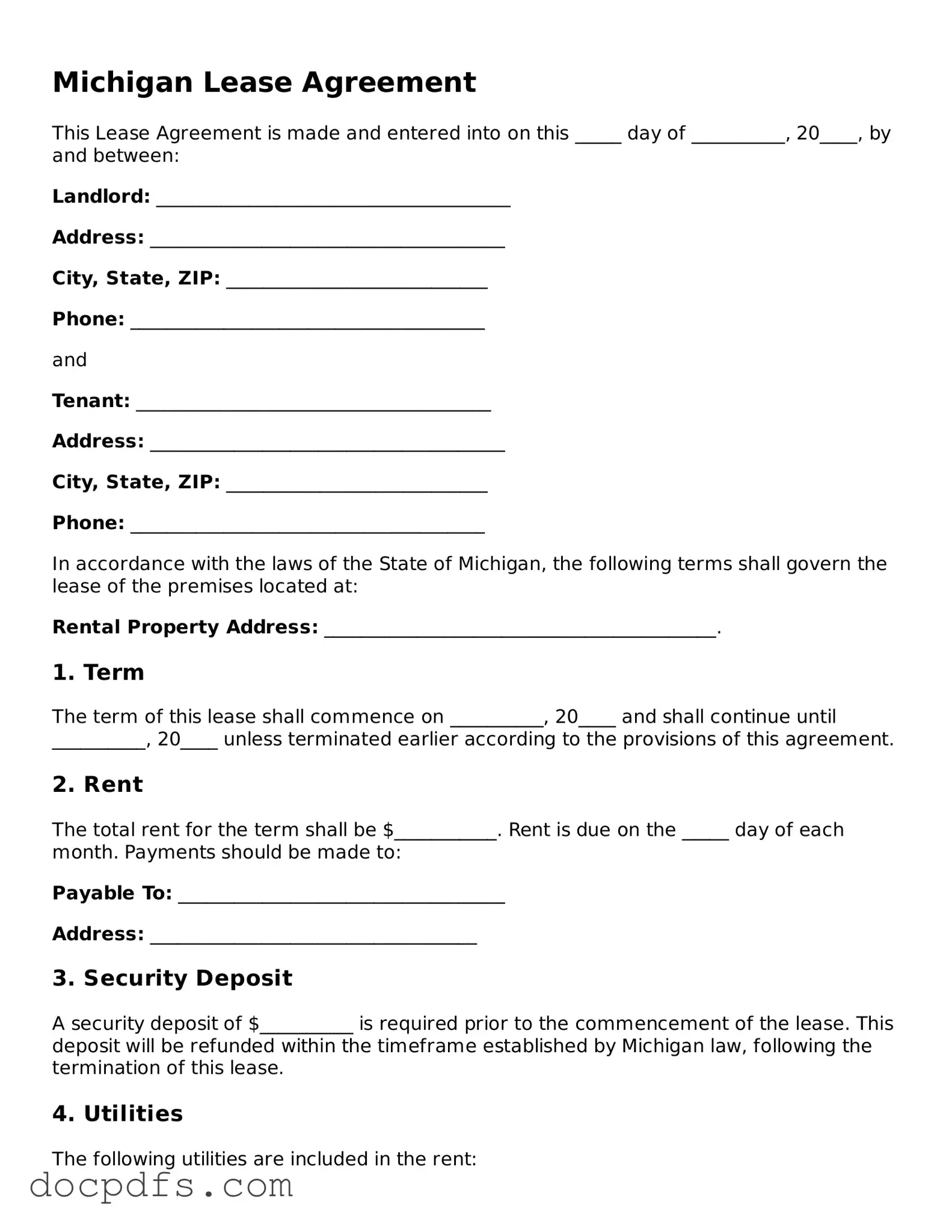Free Michigan Lease Agreement Form
The Michigan Lease Agreement form is a legal document that outlines the terms and conditions between a landlord and tenant for renting a residential property. This form establishes the rights and responsibilities of both parties, ensuring a clear understanding of the rental arrangement. By using this standardized agreement, individuals can protect their interests and promote a harmonious landlord-tenant relationship.
Open Lease Agreement Editor Now
